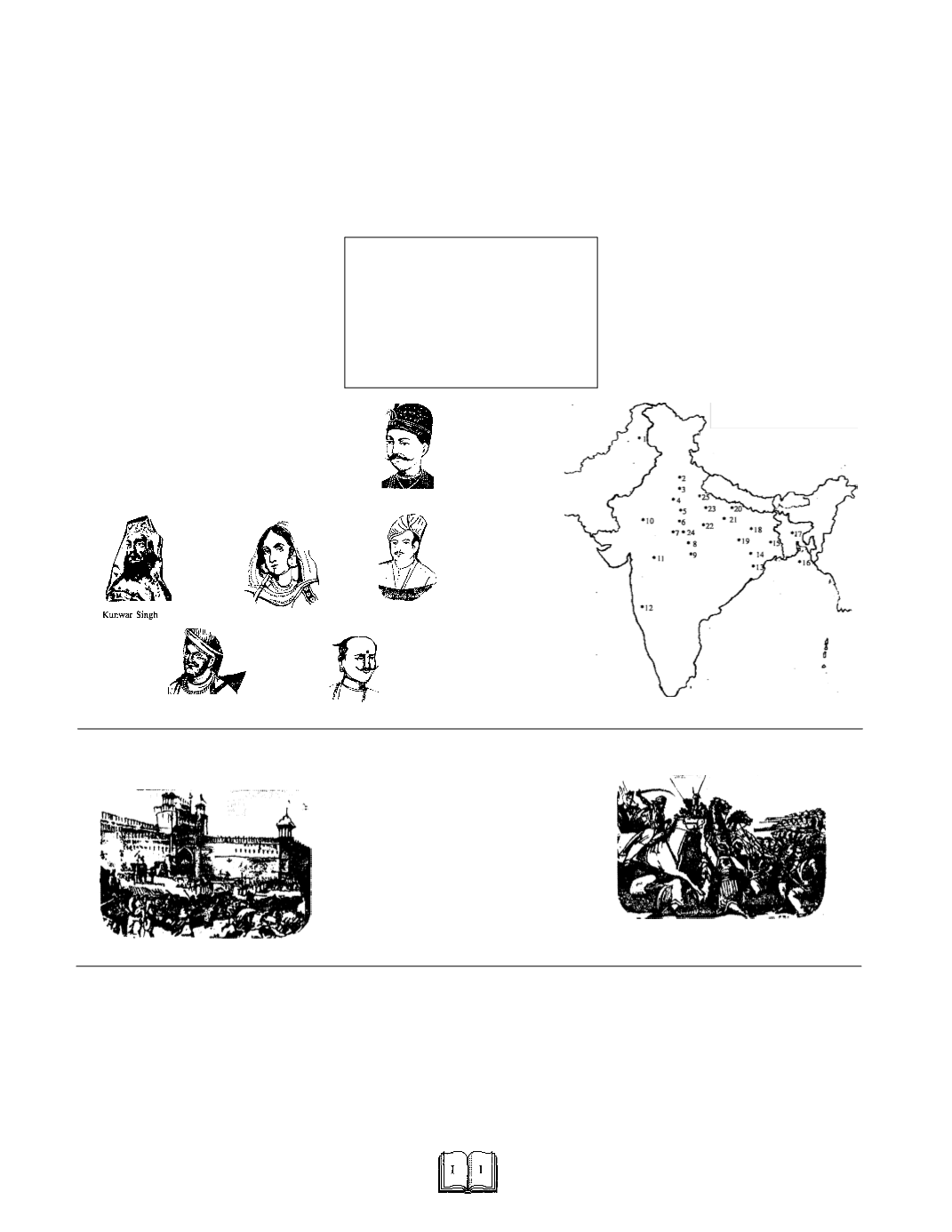

Eternal India
encyclopedia
FREEDOM MOVEMENT
FREEDOM MOVEMENT
Freedom is my birthright and I will have it’
- Bal Gangadhar Tilak.
. India's freedom movement has a unique place
not just in national history but in the History of the
World.
Our presentation of this epic struggle is
studded with visuals and gripping first hand
accounts culminating in the historic midnight
of freedom 14-15th August, 1947. The period
1857-1950 is split into four phases.
I.
1857-1885 The great uprising.
II. 1885-1905 Dawn of Nationalism : Congress Era.
III. 1905-1918 Gathering Storm
IV. 1918-1950 Age of Gandhi, Subhas, Nehru,Patel
Begum Hazrat Mahal
Rao Tula Ram
Mangal Pandey
1
.
Peshawar
2
.
Roorkee
3.
Meerut
4.
Delhi
5.
Aligarh
6
.
Mathura
7.
Bharathpur
8
.
Gwalior
9.
Jhansi
10.
Nasirabad
11
.
Indore
12.
Kolhapur
13.
Cuttack
14. Sambalpur
15.
Barrackpore
16. Chittagong
17.
Dacca
18. Hazaribagh
19..
Ranchi
20. Gorakhpur
21
.
Azamgarh
22
.
Allahabad
23.
Lucknow
24.
Agra
25.
Shahjahanpur
I- PHASE 1857-1885
1861
Indian Councils'Act
1878
Vernacular Press Act
1879
I.C.S. (Indian CiVil Service)
Established initially only by
nomination for loyalists.
1882
Lord Ripon issued Resolution on
Local Self-Government.
Major centres of Revolt
January 1857 Sepoys of Dum Dum refused to accept greased cartridges * May 10,1857 Uprising starts in Meerut.
March 1857 Mangal Pandey executed at Barrackpore
As Lord Canning who seems to have had a
premonition
of
the
trouble
ahead,
had
put it, ‘In the sky of India, serene as it is,
a small cloud may arise, at first no big-
ger than a man's hand, but which, grow-
ing larger and larger, may at last threaten
to burst and overwhelm us with ruin.
’
But the outburst he feared came much
too soon and in an unexpected manner.
Red Fort-the rallying point of rebels at Delhi
Scene depicting the battle between the British infantry
and the rebel cavalry outside Kanpur
The greatest and the most widespread
armed uprising in Northern India which shook
the foundations of British rule in India took
place in 1857.
The chief protagonists were the Indian
soldiers of the British army, zamindars and the
general populace affected by British policies.
This rebellion is also called the “Sepoy Re-
volt”.
The causes of the revolt can be grouped
into five heads - political, economic, social,
religious and military.
i)
The morale of the Indian soldiers had
been declining. Salaries were meagre,
chances of promotion were bleak. They
had to suffer the contempt of feckless
British officers.
ii)
Lord Dalhousie managed to demoralize
the Bengal Army, through his assault
on the smaller land-holders of Avadh
nearly 40 percent of whom were griev-
ously hurt by arbitrary evictions.
iii)
Lord Canning's General Services En-
listment Act requiring the sepoys to
serve in any part of the world was seen
The Great Uprising of 1857
It is often referred to as the First War of Indian
Independence. The accumulated hatred against the
British rule burst into a mighty rebellion. It was the
outcome of the changing conditions of the time.
The Revolt of 1857 was an uprising that was
waiting to happen. One hundred years of British
imperialism had created a ferment across the land
that was fuelled by a combination of political,
economic, social, religious and military factors.
The Revolt was suppressed but it marks a turning
point in the history of India. It led to the growth of
a new national consciousness which found expres-
sion in the formation of the Indian National Con-
gress, the Muslim League, the Home Rule League,
the Swarajist Party and other organisations. The
real awakening of India took place after the parti-
tion of Bengal in 1905. The agitation against the
partition led to its annulment in 1911. The ‘divide
and rule’ policy actively pursued by the British and
the crystallisation of the idea of Pakistan after it
first found expression at the Allahabad session of
the Muslim League in 1930 resulted in the partition
of the country when independence came in August
1947.
TantiaTope
















